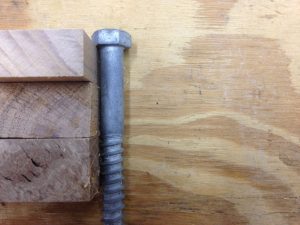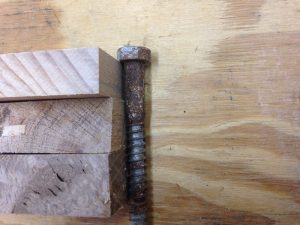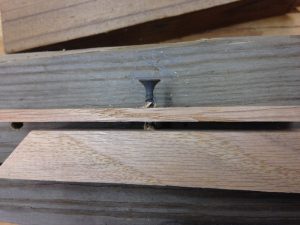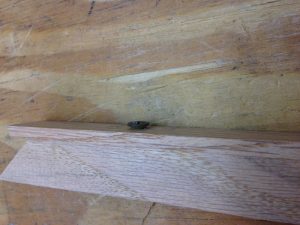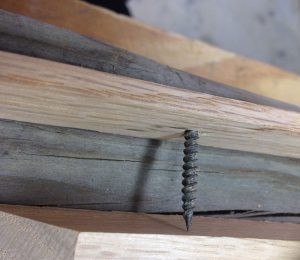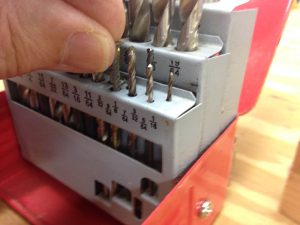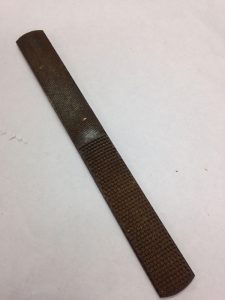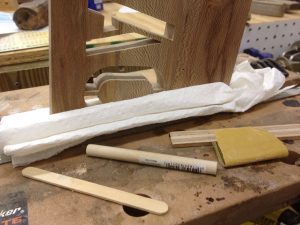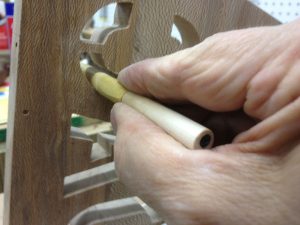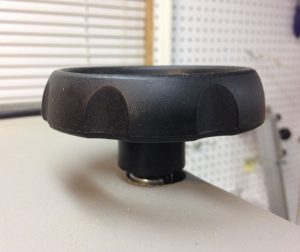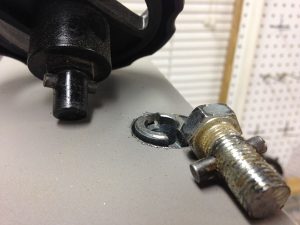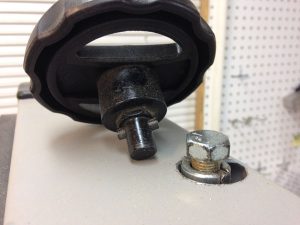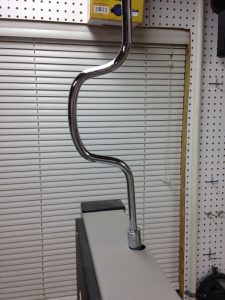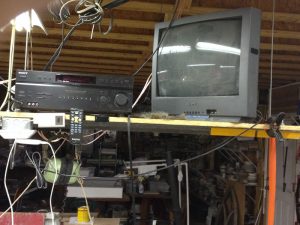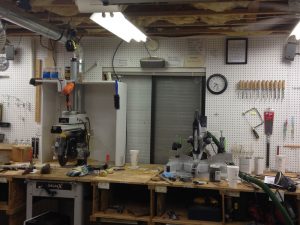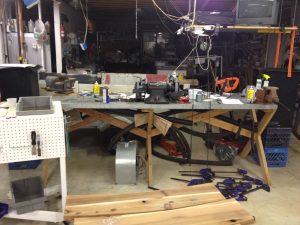How do you feel when non-woodworkers call you a carpenter?
I suppose I was a woodworker in 7th grade, when I took wood shop in Mr. Boney’s South Park Junior High class, but I wasn’t very good at it. It seems I could never get anything square, or make good-looking joints. That was 1964, and I’m not even sure the term “woodworker” existed then. “Woodwork” dates to 1640-1650.
I was a framing and trim carpenter for a time after my Air Force stint. That was really fun work, and I learned a lot.
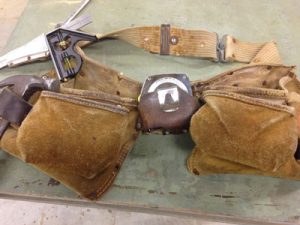
This was my very first nail apron, purchased from Sears. Our local Sears is scheduled to close its doors after 45 years in Edgewater Mall.
I remember a homeowner asking our foreman, Jack English, whether he knew any carpenters who could make her some bookshelves. One of my coworkers, older and more worldly than I, said, “What she wants is a cabinetmaker, not a carpenter.” I didn’t know that there was such a thing as a cabinetmaker, much less a difference, but I didn’t let my ignorance show, I just filed the information away for future use.
When I went to the University of Mississippi, Ole Miss, I was carrying a heavy class load, so there wasn’t time for a job, but I did spend some of my weekends making picnic tables to sell. Po’ Boy spruce studs were 10¢ each, and were straighter and had fewer barked edges than today’s studs at 33 times the price. Treated pine, with real arsenic, made a premium dining surface, unless you wanted to spring for heart cedar or redwood, and even that was affordable.
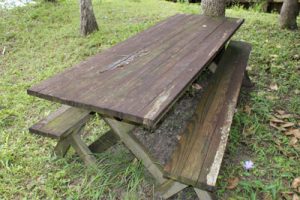
Today, 23 treated pine 2x4x8′ boards to make this picnic table and matching benches would cost you about $110.00. In the 70s, I sold the completed table with benches for about $50.
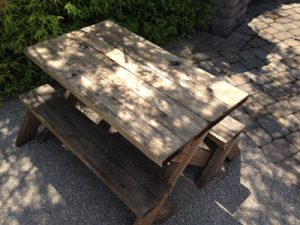
Cedar’s price has gone up a bit. When I made this rectangular heart cedar table for our eldest granddaughter, the wood cost about $200. But, it was pure heartwood, and has stood up well to brutal Kentucky summers and winters…
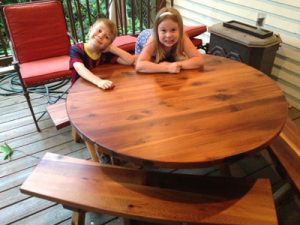
…The lumber for this little round job, with curved benches, on the other hand, cost around $400, and I had to do a lot of selecting to minimize sapwood use in crucial parts. Fortunately, it will live on a porch, where it will have a bit more protection from Kentucky weather, though it will still have to stand up to the two youngest grandchildren.
In the time between the end of the spring semester in Oxford, MS, and the fall start time in Auburn, AL, I needed income. I couldn’t make a long-term commitment to an auto mechanic’s job, and it didn’t occur to me to look for a nearby dairy farm, but there was a lot of home construction in Auburn, and it was easy to find a job on a home-building crew. So, for a time, I was a carpenter again.
We established in a previous poll that most woodworkers are DIYers. Therefore, we’re doing a lot of carpentry on our own homes and businesses, and maybe some for customers, too.
For me, then, I’m proud to be considered a carpenter. Still, when I think of my role as furniture-builder, I consider the difference between what my wife, Brenda, produces, which is fine art, versus what you can buy at a flea market, which are craft-level items. Not every piece of furniture I build rises to the level of art, but it’s always what I strive for.
In carpentry, on the other hand, art is not usually my goal, but I still give it my best.





